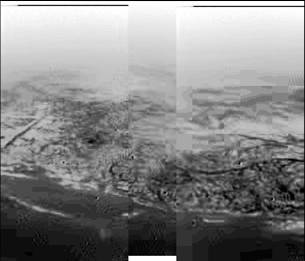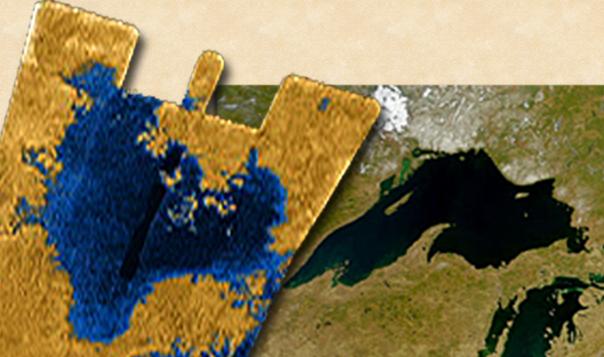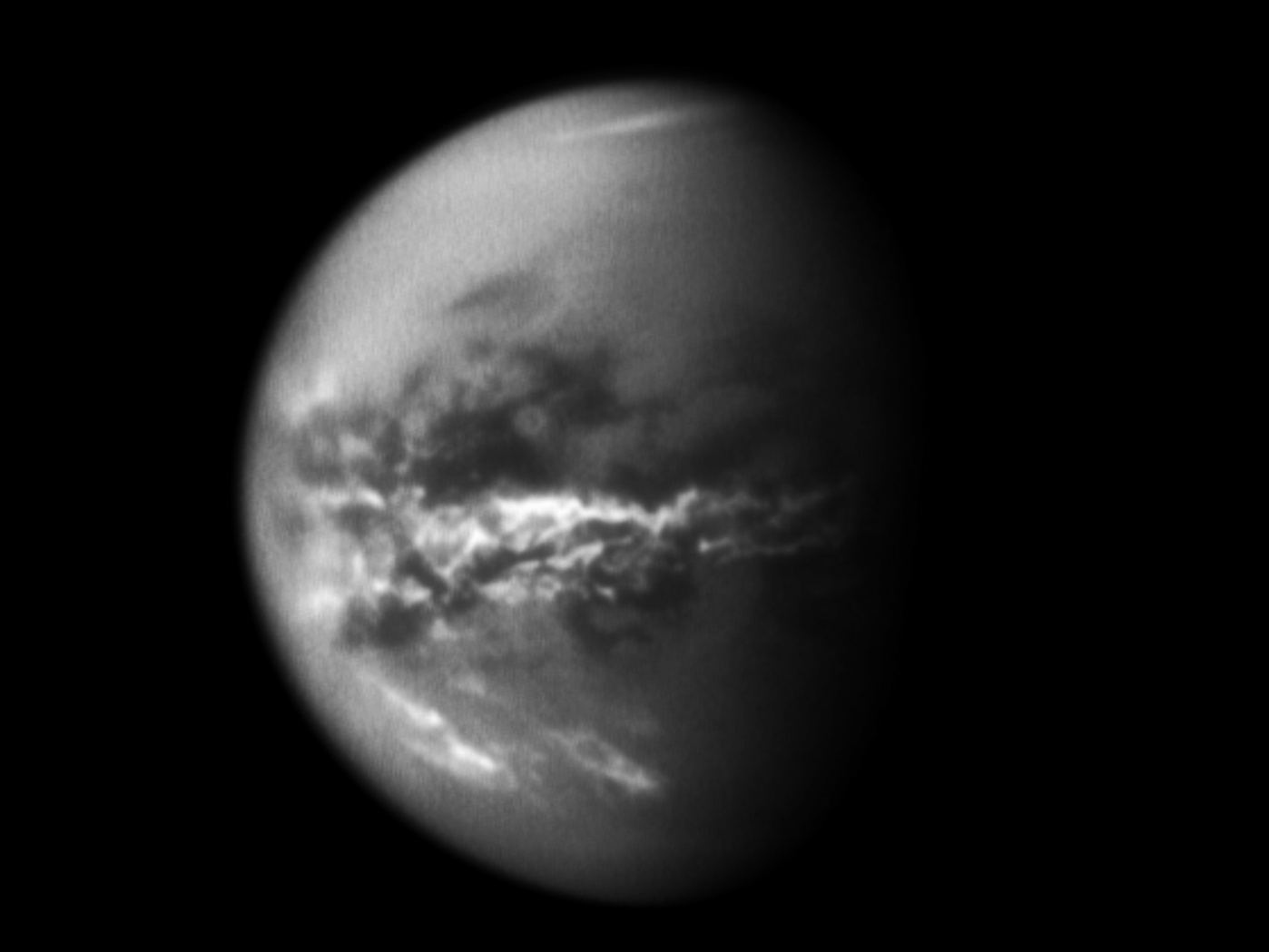The long hunt for lakes of liquid methane on Saturn’s large moon Titan – which began as a gleam in the eye of astronomical theorists decades ago and culminated with the confirmation of actual methane lakes by the Cassini spacecraft in 2007 – has since blossomed into various computer models aiming to explain the lakes. A new computer model from the California Institute of Technology (Caltech) suggests that simple explanations of Titan’s “methane cycle” (a distant cousin to Earth’s water cycle) might be best, after all. The model explains several mysterious features of Titan’s lakes and storms, using mechanisms reminiscent of the ordinary natural processes around us here on Earth.

Titan – with its impenetrable methane atmosphere – is the only place in the solar system, other than Earth, that has large bodies of liquid on its surface.
These scientists say their model produces the right distribution of lakes on Titan, for one thing. Methane tends to collect in lakes around the poles, the model suggests, because the sunlight there is weaker on average – just as it is on Earth. Energy from the sun normally evaporates liquid methane on Titan’s surface, but since there’s generally less sunlight at the poles, it’s easier for liquid methane there to accumulate into lakes.

Plus, there are more lakes in Titan’s northern hemisphere. The team points out that Saturn’s orbit around the sun is slightly elongated, such that Titan is farther from the sun when it’s summer in the moon’s northern hemisphere. Add that the fact that a planet orbits more slowly the farther it is from the sun, causing Titan’s northern summer to be longer than its southern summer. Summer is the rainy season in Titan’s polar regions, when methane rain falls, so the rainy season is longer in the moon’s northern hemisphere. Meanwhile, the summertime methane rains in Titan’s southern hemisphere are more intense because Titan is closer to the sun at that time – so sunlight is more intense, triggering more intense rainfall. But the intensity of the southern hemisphere rainfalls can’t match the longevity of the rainy season in the northern hemisphere. Overall, more rain falls over the course of a year in the north, filling more lakes.

Another success of the computer model, its makers say, is that it explains the mysterious signs of rain runoff at Titan’s lower latitudes and equatorial region. These regions on Titan can go years without a drop of rain, they say. It was a surprise, therefore, when the Huygens probe in 2005 saw evidence of rain runoff in the terrain of Titan’s lower latitudes – and in 2009 when other researchers (also at CalTech) discovered storms in this same, supposedly rainless, area.
No one really understood how those storms arose, but the new CalTech model was able to produce intense downpours around the time of Titan’s vernal and autumnal equinoxes — enough liquid to carve out the type of channels that Huygens found. The researchers explained:
It rains very rarely at low latitudes, but when it rains, it pours.
Finally, the CalTech scientists say their model explains a further mystery on Titan – clouds observed over the past decade during summer in Titan’s southern hemisphere, clustering around southern middle and high latitudes.

They say their model not only successfully reproduces what scientists have already seen on Titan, but also can predict what scientists will see in the next few years. For instance, based on the simulations, the researchers predict that the changing seasons on Saturn’s moon will cause Titan’s lake levels in its northern hemisphere to rise over the next 15 years. The scientists also predict that clouds will form around Titan’s north pole in the next two years.
Making testable predictions, these scientists say …
… is a rare and beautiful opportunity in the planetary sciences. In a few years, we’ll know how right or wrong they are.
This is just the beginning. We now have a tool to do new science with, and there’s a lot we can do and will do.
Bottom line: Titan is the frozen largest moon of the planet Saturn. Its average surface temperature is -300 degrees Fahrenheit, and its diameter just less than half of Earth’s. It has methane clouds and fog, methane rainstorms and plentiful lakes of liquid methane. CalTech astronomers this week (January 4, 2011) announced a new computer model that explains the storms and lakes on Titan.











